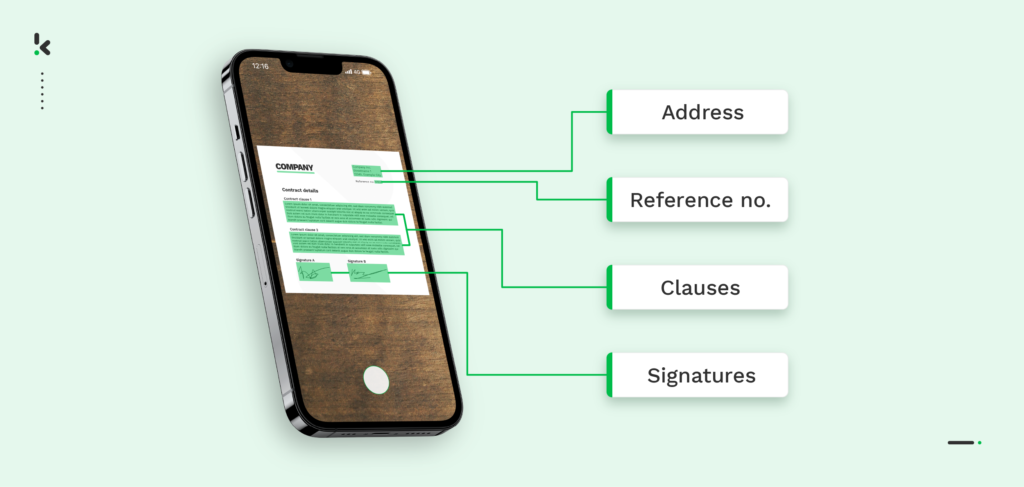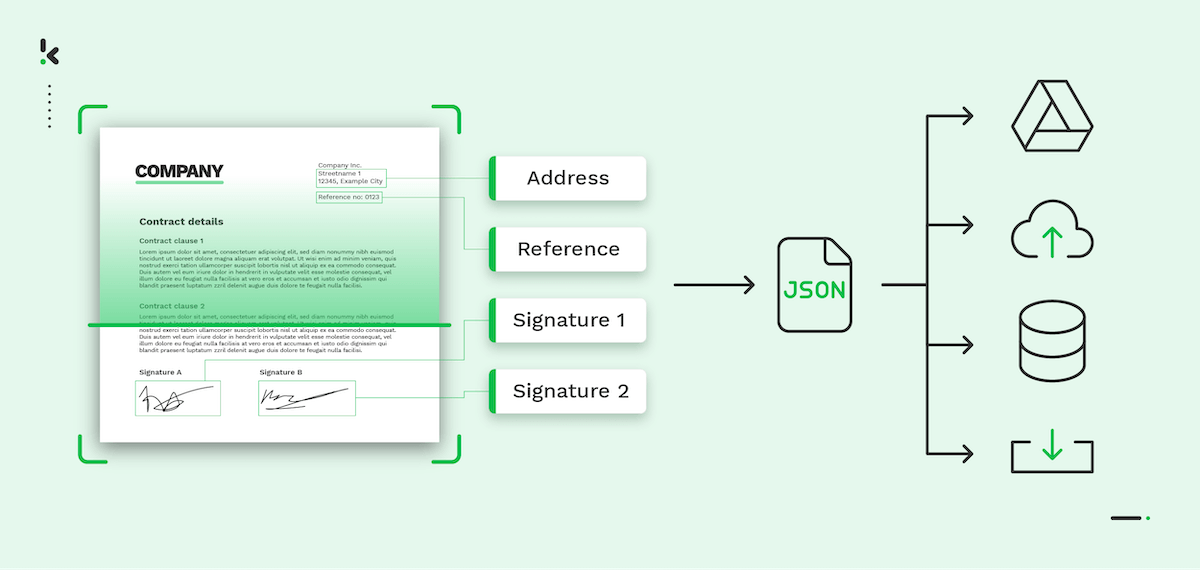

We know how overwhelming managing your business’s contracts can be – from sifting through stacks of paperwork to locate specific clauses, tracking key deadlines for renewals or terminations, to ensuring compliance with ever-changing legal standards. This tedious and time-consuming process can drain your energy, keeping you stuck in tasks that, while necessary, don’t contribute to your business’s growth or success.
You’re not alone in this. Many businesses face the same challenge of handling large volumes of contracts, often relying on manual data entry. This not only eats up valuable time but also increases the risk of errors, especially when dealing with sensitive information.
If you’re ready to leave these frustrations behind and focus on what you do best, we have the perfect solution for you: OCR, short for Optical Character Recognition.
In this blog, we’ll cover everything you need to know to get started with OCR in contract management. Let’s get started!
What is OCR in Contract Management?
To begin with, OCR is a technology that recognizes text and transforms it into a searchable format that computers can read. It can extract text from scanned documents such as invoices, receipts, or contracts.
In contract management, OCR refers to the use of technology to convert a scanned contract into digital formats that are searchable and editable. Many data fields, including contract clauses, party names, or payment terms, can be extracted from contracts.
OCR allows businesses to access critical information faster, enhancing their document management workflow. This results in enhanced efficiency, improved overall productivity, and lower costs compared to manual methods.
How Does OCR in Contract Management Work?


Are you unsure about OCR and afraid to use it? Don’t be! OCR is here to help. It is designed to simplify your life and boost your firm’s productivity.
Here’s a brief step-by-step guide on how to use OCR for contracts in a software solution like Klippa DocHorizon.
Step 1: Upload your documents
Upload any file you want from email attachments to scanned documents via app, web, and email. Supported formats include JPG, JPEG, PNG, PDF, DOC, DOCX, XLSX, HEIC, WEBP, and more.
Step 2: Extract key information
Our AI-powered OCR identifies the data fields you want to extract, such as party names, contract dates, or payment terms to name a few.
Step 3: Validate data
Validate data and identify any missing or potentially fraudulent details, ensuring enhanced accuracy and authenticity of information.
Step 4: Export to various formats
After the data has been validated, you can forward it to your CRM, ERP, or database. Export the data in your desired format, such as JSON, CSV, XML, XLS, UBL, and more.
Benefits of Using OCR in Contract Management
OCR has been in use for several years, with its global market size reaching 12.56 billion in 2023. It’s not surprising that this number is expected to grow as it brings a lot of benefits to businesses. Let’s take a look at some of them.
Time Savings
OCR is here to replace the traditional manual way of data entry, sorting, and archiving. That means spending less time on these time-consuming tasks and focusing more on vital ones for the businesses.
Reduced Costs
Manual data entry requires human resources, making it more costly. OCR reduces the expenses of contract processing such as clause identification by automating labor-intensive processes. Resources are now available for higher-value activities such as contract negotiations and compliance management.
Improved Accuracy
Human intervention is valuable when it leads to successful outcomes and improved customer satisfaction. But when it only provides you with errors and mistakes then it’s time to reconsider. Research has shown that 90% of contract management inaccuracies are due to human error. That’s where OCR comes in, streamlining your processes by reducing human errors and inaccuracy.
Enhanced Productivity
By automating time-consuming tasks, OCR allows legal teams to focus on their core activities, such as contract negotiation and compliance management. As a result, successful business outcomes and boosted productivity are inevitable.
Compliance and Risk Reduction
OCR systems can automatically scan contracts for compliance-related terms and regulatory clauses, helping organizations comply with legal standards and internal policies while also identifying potential risks.
Scalability
A key feature of OCR is its ability to handle large volumes of contracts while staying on top of performance. By processing diverse formats, multiple languages, and handwritten text, OCR ensures the best possible balance between efficiency and accuracy.
Challenges of Using OCR in Contract Management
OCR is an innovative technology that has already helped a lot of businesses but it’s still a work-in-progress tool. While it offers a wide range of benefits, it’s not yet perfect, which means that challenges exist and need to be addressed.
Accuracy Issues with Document Variability
PDFs, Word documents, scanned images, and handwritten text are some of the wide range of formats a contract can have. They also vary in font types, sizes, colors, and even quality like low-resolution or poorly scanned images. All these influence OCR accuracy, which can lead to potential errors in data extraction, misrecognition of critical information, and loss of information.
Accuracy Issues with Language, Handwriting and Symbols
Handwritten text, signatures, and symbols are elements that OCR tools may struggle with. Legal terminology, uncommon abbreviations, or non-standard symbols can alter the intended meaning, undermining accuracy and leading to errors.
Security and Compliance Concerns
Since legal contracts contain highly sensitive information, OCR tools need to be GDPR compliant. Encryption, secure storage, and compliance certifications are essential to avoid data breaches and non-compliance penalties.
Training Investments
Implementing OCR means that companies need to train their employees on how to efficiently use this tool and accurately interpret its results. This process initially requires time, resources, and ongoing support.
Must-Have Features of OCR for Contract Management
When looking for an OCR software solution certain features are needed, especially when handling contract documents with numerous data fields. Let’s explore the must-have features of your next OCR software purchase.
High Accuracy Text Recognition
This capability reduces errors since it adapts to language and font variations and minimizes the need for manual correction.
Format Variability Support
Handles a wide range of input types like PDFs, Word documents, scanned images, and even handwritten text.
Layout Detection
Recognizes complex structures like bullet points, multi-column formats, side notes, links, or graphs.
AI-Powered Data Extraction
Data identification and extraction become automatic, eliminating the hassle of dealing with complex key fields like contract clauses, expiration dates, or signatures.
Integration with Contract Management Systems
Automated workflows and improved efficiency are key benefits resulting from the seamless integration of OCR technology.
Security and Compliance Features
This protects sensitive contract information with encryption and warrants compliance with GDPR.
By leveraging these must-have features, OCR becomes a necessity in automating contract workflows. These capabilities are put to use in a wide range of contract management use cases.
Use Cases of OCR in Contract Management
Here are some of the most common use cases where OCR plays an important role in streamlining contract management processes.
Data Extraction and Metadata Tagging
Key fields like names, dates, financial terms, and clauses are identified and extracted automatically. Then OCR creates metadata labels for easy categorization, quick search, and effective retrieval.
Contract Comparison
With OCR, companies can digitize multiple versions of the contracts, making it easier to compare changes between the different versions. This feature allows smoother negotiations that lead to transparency and accuracy
Contract Classification
Contract classification is achieved by organizing and managing contracts based on their content and type. For example, non-disclosure agreements (NDAs), employment contracts, service agreements, or intellectual property agreements. This helps companies manage large amounts of contracts efficiently.
Contract Expiration and Renewal
Expiration dates or renewal deadlines are first identified and then they automatically trigger alerts, helping companies avoid missed opportunities.
Contract Review and Compliance
By extracting and analyzing data fields, OCR tools help detect discrepancies, ensuring compliance with GDPR.
While numerous OCR solutions are available in the market, Klippa DocHorizon stands out as a powerful option for contract processing. In the following section, we’ll explore Klippa’s OCR technology and the multitude of benefits it offers.
Klippa’s OCR for Contract Management
Do you want to boost efficiency, step up your document processing, and cut operational costs? Then, Klippa’s AI-powered Document OCR is for you! It puts an end to manual data entry, reduces errors, and enhances compliance.


Klippa’s smart OCR software simplifies contract management by capturing, recognizing, and converting scanned contracts into searchable data. All this becomes automatic!
From extracting key details like clauses, expiration dates, or signatures to automating workflows for contract creation, review, and renewal, this AI-powered OCR solution ensures accurate and efficient data extraction to support your contract management processes.
But that’s not all! By choosing Klippa’s solution you get to:
- Accurately extract data fields from a variety of document types with OCR
- Automatically anonymize data and images to ensure full compliance with privacy regulations
- Transform documents into various formats, including CSV, XML, JSON, or PDF
- Leverage SDK and API for seamless integration with your existing software solutions
- Enhance fraud prevention through automated document verification processes
- Efficiently classify and categorize a wide range of document types
- Streamline document processing based on specific data fields
Are you ready to elevate your processes with Klippa? Then contact our experts for additional information or book a free demo down below!
Conclusion
Taking advantage of OCR’s capabilities means you’re adapting to a digital future where businesses can simplify workflows, reduce manual errors, and save time and resources while staying ahead of the competition and improving performance. Specifically, when it comes to contract management, leveraging OCR tools improves document management by making it easy to organize, search, and retrieve information quickly.